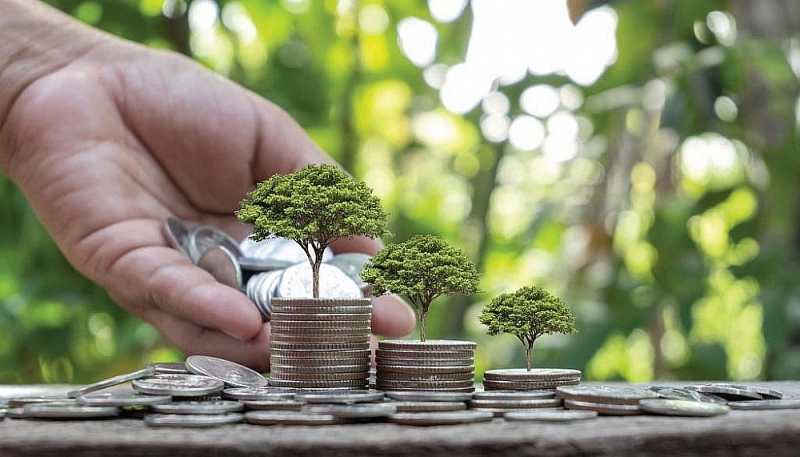Green credit proportion remains low due to lack of specific evaluation criteria
According to the State Bank of Vietnam (SBV), as of the end of September 2024, 50 credit institutions had outstanding green credit balances exceeding VND 665 trillion, accounting for over 4.5% of the total outstanding loans in the economy.
This represents a 7.11% increase compared to the end of 2023, primarily concentrated in renewable and clean energy (over 43%) and green agriculture (over 30%).
The SBV also reported that outstanding loans assessed for environmental and social risks reached VND 3.28 quadrillion, accounting for over 22.33% of the total outstanding loans in the economy, a 15.62% increase compared to the end of 2023.
Speaking at the "ESG in Banking: Implementing for Leadership" seminar held on November 19, 2024, SBV Standing Deputy Governor Dao Minh Tu emphasized that the banking sector has consistently pioneered the application of Environmental, Social, and Governance (ESG) standards.
 |
|
SBV Standing Deputy Governor Dao Minh Tu speaking at the event |
At Agribank, outstanding loans for renewable and clean energy ranked first at VND 15.33 trillion, representing 55% of the total green credit balance. Sustainable forestry followed at VND 6.805 trillion (24.5%), and green agriculture at VND 5.54 trillion (20%).
At SHB, green credit accounted for nearly 10% of the total outstanding loans. Furthermore, SHB has implemented corporate governance measures to ensure sustainability in all its operations.
Despite these efforts, the figures indicate that the proportion of green credit in the total outstanding loans remains low.
Mr. Le Hoai An from Integrated Financial Solutions Joint Stock Company (IFSS) pointed out that green credit in Vietnam primarily focuses on renewable energy projects, while evaluation criteria remain dependent on individual bank standards rather than international best practices.
He also noted that the lack of clear standards hinders investors' ability to assess the safety and transparency of green credit and green bond investments.
Furthermore, the absence of specific criteria limits access to capital for genuinely environmentally friendly projects and hinders consistency in funding decisions by banks and financial institutions.
 |
Therefore, experts recommend developing a set of quantifiable standards to measure ESG compliance, with specific criteria such as CO2 emission reduction capacity, resource management efficiency, positive community impact, and implementation of transparent governance standards.
For example, a project could be considered compliant with ESG environmental standards if it reduces greenhouse gas emissions by at least 30% compared to industry benchmarks, actively improves social welfare, and maintains transparent governance processes.
Ms. Ha Thu Giang, Director of the Credit Department for Economic Sectors (SBV), stated that to promote ESG practices and green the banking sector, the SBV will guide credit institutions in providing green credit and reporting on its implementation after the Prime Minister issues the National Green Classification List.
However, for banking policies and mechanisms to be truly effective, Ms. Giang emphasized the need for coordination and collaboration among various ministries, agencies, and relevant units.
Dr. Nguyen Thi Thu Ha, Deputy Head of Agribank's ESG Steering Committee, also proposed the prompt issuance of environmental criteria and specific criteria for green credit projects.
Agribank also recommended establishing a database on businesses' environmental compliance and violations to provide a basis for credit institutions to assess environmental risks when evaluating borrowers.
Additionally, the Government, the Ministry of Natural Resources and Environment, and the Ministry of Finance should implement policies to promote the carbon market and establish regulations for operating a carbon credit exchange.








